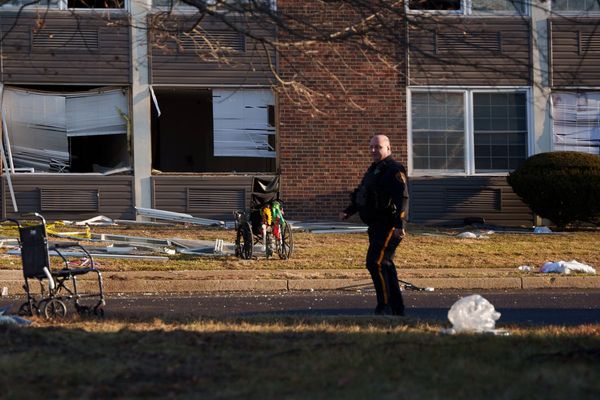
Forget about the NSW government’s claims about some sort of GST “hole“. It is swimming in revenue from Sydney’s turbocharged property market — and NSW Labor has used it to plunge into the red.
It’s an improbable achievement. The Perrottet government’s last budget in 2022 forecast a slow return to surplus, albeit a modest one, by 2024-25. The Minns government has engineered a whopping $9.7 billion deficit this year and $3.6 billion next — with the budget remaining in deficit across the forward estimates.
That’s not due to any financial trickery in the Coalition’s last budget in 2022: Premier Chris Minns and Treasurer Daniel Mookhey have around $3 billion in extra revenue this year and $8 billion next compared to 2022’s forecasts.
In fact, revenue in NSW is up more than $10 billion across the forward estimates compared with just the mid-year budget assessment for 2023-24 last Christmas — due to stamp duty from a strong property market and higher coal royalties.
This should have seen NSW Labor crowing about delivering a budget surplus, but it has spent all of the revenue windfall and much more. Spending has lurched upward by nearly $5 billion just since December. Compared to the Coalition’s last budget in 2022, Labor is spending more than $12 billion more next financial year.
As a result, the small surplus tipped back in December for the coming budget year has become yet another deficit, and there’s no black ink in sight.
As for that GST rip-off claim — allegedly a $12 billion shortfall — the total reduction in GST revenue since the Christmas update is $6.2 billion in net terms across the forwards, and just $1 billion next year. NSW Treasurer Daniel Mookhey is entirely justified in complaining about the GST carve-up, but is it to blame for NSW remaining stuck in deficit? No.
Unlike his Queensland Labor counterparts, who are splurging despite a buoyant Queensland economy, Mookhey has some greater justification for his deficit. NSW Treasury forecasts tepid state growth of just 2% over the next two years and 2.25% for the rest of the forwards. NSW unemployment is tipped to reach 4.5% — barring the pandemic, this is its highest rate since 2019.
The quality of the spending is better than in Queensland, too. NSW Labor is making a major investment in social housing: $5.1 billion over four years for more than 8,000 social housing dwellings, including priority housing for family violence victims; another $1 billion for social housing maintenance; and a half-billion package for homelessness.
NSW is the last of the big states to lift its game on social housing after more than a decade of underinvestment, but is finally putting substantial investment behind home-building. There’s also nearly half a billion directed to expanding emergency departments at hospitals and — more housing — $200 million to expand health staff accommodation in rural and regional areas.
If NSW Labor is overspending, at least it’s directing that spending into critical areas, in contrast to the blatant vote-buying of the terminal Queensland government. Curiously, there have been none of the absurd headlines that accompanied the Queensland budget from doctrinaire neoliberals claiming that the government’s deficit would push up interest rates.
But Mookhey’s budget will have some flow-on effects nationally. As Crikey readers know, the health and caring services sector is not merely the biggest employer of Australians, it’s also the fastest-growing employer: more than one in three jobs created in Australia since 2019 have been in health and caring. Looking after people is the 800lb gorilla of the Australian jobs market and it is changing the entire economy.
Mookhey’s additional spending on emergency departments — plus the public sector pay rises that are designed to retain frontline workers — will only enhance the dominance of that sector. There’s a lot of talk about how resilient our jobs market is despite high interest rates. A key reason is that government spending on health and caring (and education, another big, fast-growing sector) is sucking tens of thousands of more workers a year into those industries. And that won’t slow down any time soon — as the NSW budget shows.







